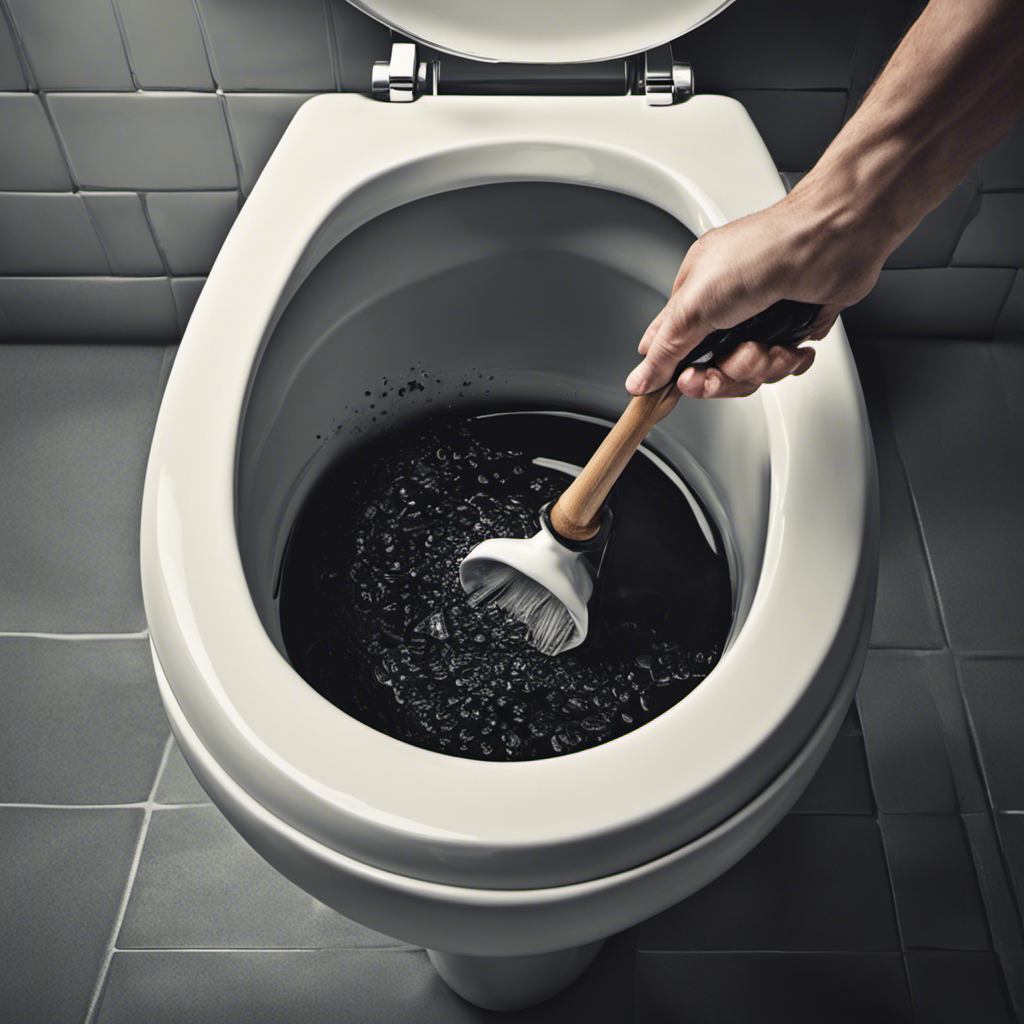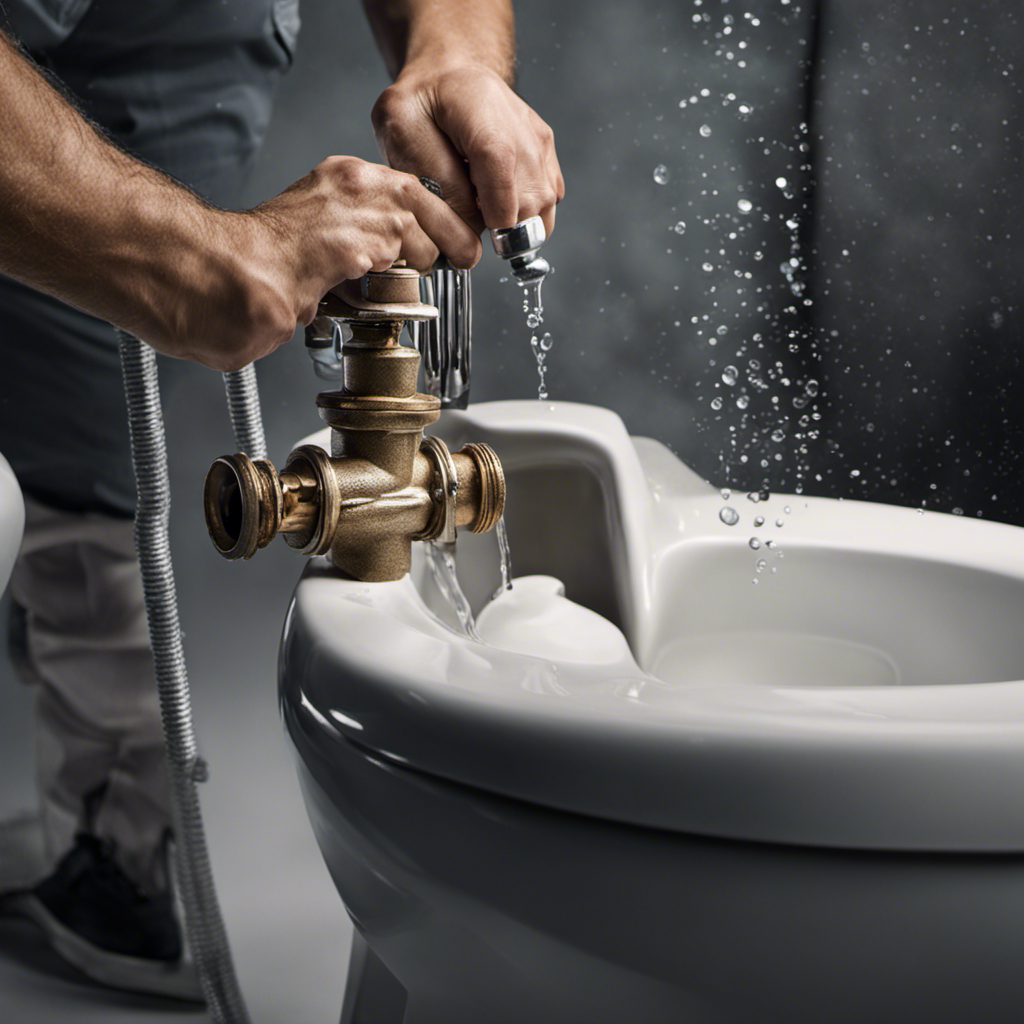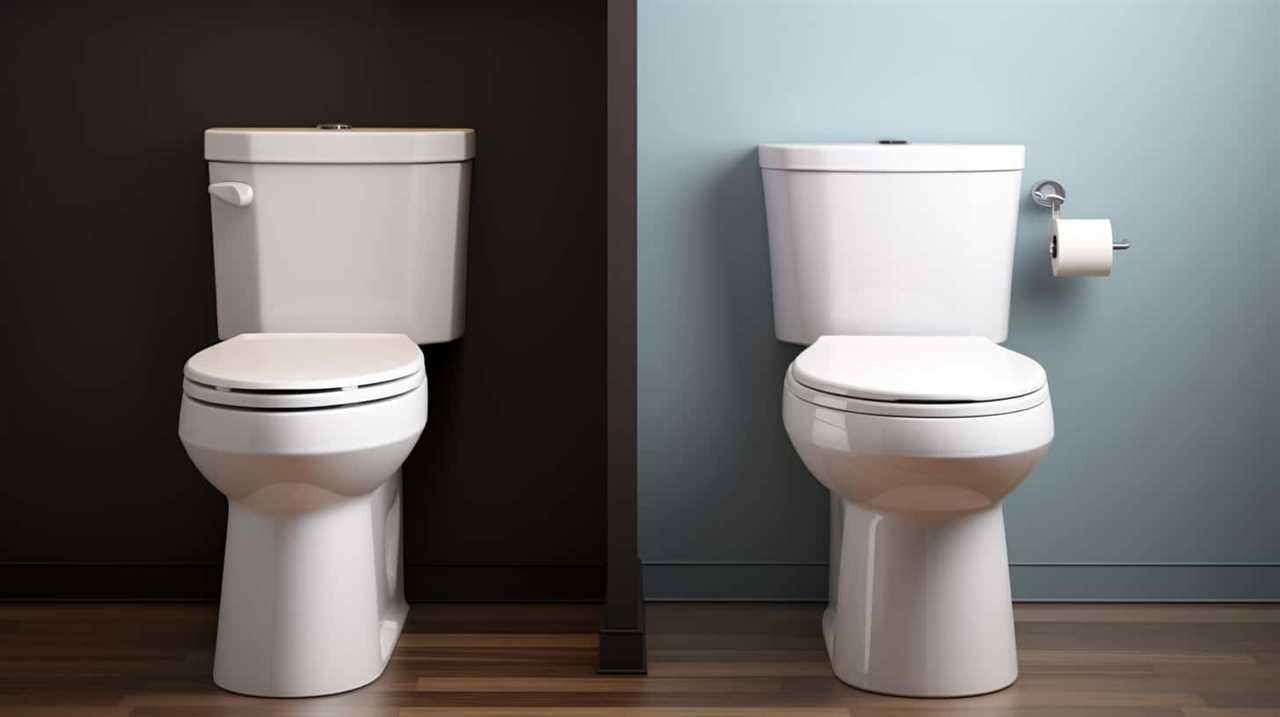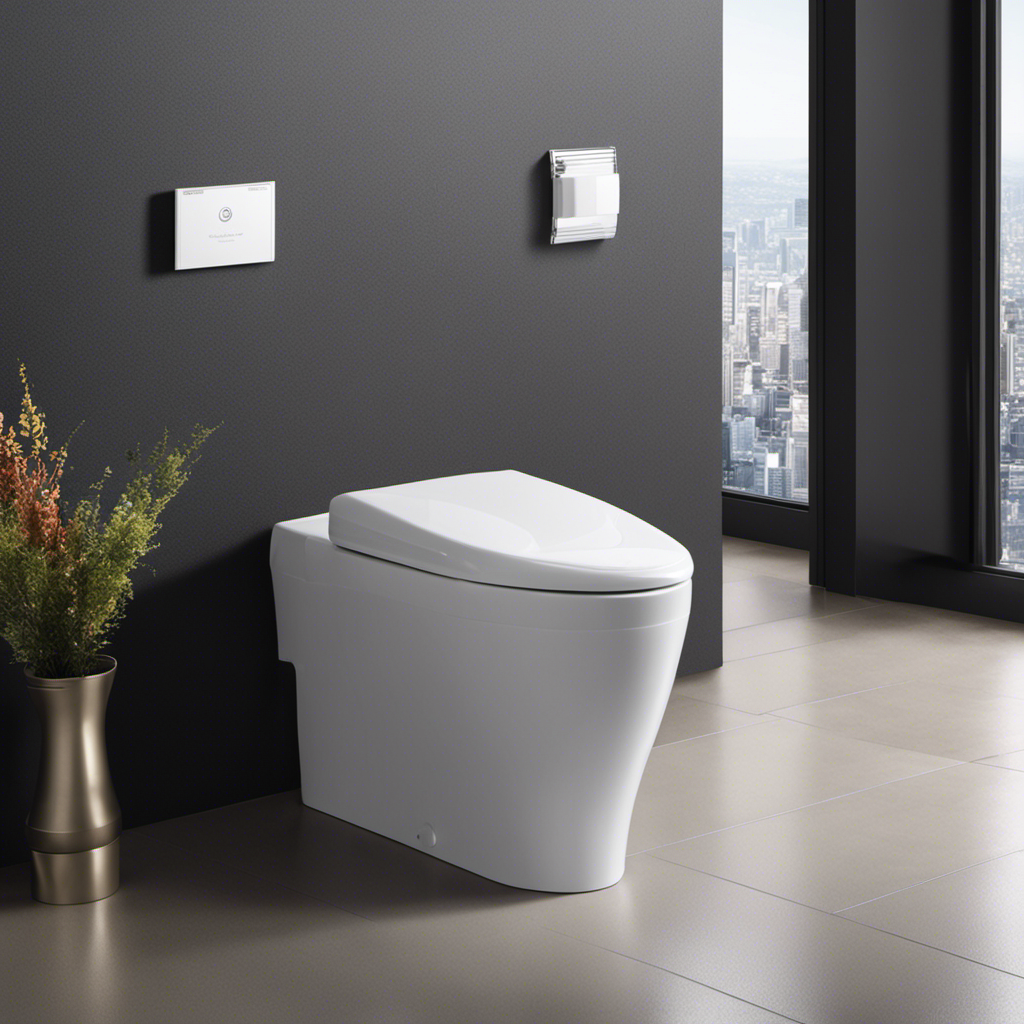I’ve had my fair share of frustrating moments with a toilet that just refuses to flush. It’s like trying to push a boulder uphill, only to have it roll right back down.
But fear not, fellow bathroom warriors! In this article, I’ll guide you through the common causes of toilet flushing problems and provide troubleshooting tips to get that stubborn toilet working again.
We’ll dive into the inner workings of a toilet, signs of a blocked drain, and quick fixes you can try.
So let’s roll up our sleeves and conquer the battle of the unflushable toilet!
Key Takeaways
- Insufficient water in the tank can cause a toilet to not flush properly.
- A faulty flapper valve may be the reason why a toilet won’t flush, and it may need to be replaced or maintained.
- Adjusting the water level in the tank can improve flush performance.
- A clogged drain pipe can also prevent a toilet from flushing, and it can be resolved by using a toilet plunger.
Common Causes of Toilet Flushing Problems
One common cause of toilet flushing problems is when you don’t have enough water in the tank. When the tank doesn’t have enough water, it can’t create the necessary pressure to flush the waste down the drain. This can happen if the water level in the tank is too low or if there is a problem with the fill valve or the flush valve.
Another common issue is when the toilet won’t flush after a plunge. This can occur if the blockage is not completely cleared or if the plunger was not used correctly. In such cases, it is important to troubleshoot the toilet to identify and fix the underlying problem.
How to Troubleshoot a Toilet That Won’t Flush
When troubleshooting a toilet that won’t flush, there are several key points to consider.
First, a clogged drain pipe could be the culprit, preventing proper water flow and resulting in a weak or non-existent flush.
Second, a faulty flapper valve may be to blame, as it is responsible for releasing water from the tank into the bowl during the flushing process.
Lastly, adjusting the water level in the tank can also affect the flush, as an insufficient amount of water may not provide enough force to clear the bowl.
Clogged Drain Pipe
If your toilet won’t flush, it’s likely due to a clogged drain pipe. A clogged toilet can be a frustrating problem to deal with, but it can usually be resolved with a toilet plunger.
To unclog the drain pipe, start by positioning the plunger over the drain opening and creating a tight seal. Then, push and pull the plunger vigorously to create suction and dislodge the clog. Repeat this process several times if necessary, and be sure to flush the toilet afterwards to check if the clog has been cleared.
However, if the toilet still won’t flush after using a plunger, the problem may lie with a faulty flapper valve.
Faulty Flapper Valve
A faulty flapper valve can cause a toilet to not flush properly. The flapper valve is a key component in the flushing mechanism of a toilet. It is responsible for sealing the tank and releasing water into the bowl when the handle is pressed.
Over time, the flapper valve can become worn or damaged, leading to leaks or incomplete flushes. To address this issue, flapper valve replacement or maintenance is necessary. The replacement process involves shutting off the water supply, removing the old flapper valve, and installing a new one.
Regular maintenance includes checking for any signs of deterioration, such as cracks or mineral deposits, and cleaning the valve to ensure proper functioning. By addressing flapper valve issues promptly, you can restore your toilet’s flushing capability and prevent any further problems.
Water Level Adjustment?
Adjusting the water level in the tank can help improve the performance of a faulty flapper valve. When the water level is too low, it can affect the water pressure in the toilet bowl, causing the flush to be weak or incomplete. By increasing the water level, the pressure exerted on the flapper valve increases, allowing for a more forceful flush.
Additionally, the shape of the toilet bowl can also impact the flushing power. Some toilet bowl shapes are designed to create a stronger siphon effect, which aids in the flushing process.
When adjusting the water level, it is important to find the right balance to ensure optimal flushing performance without causing any water overflow.
Understanding the Inner Workings of a Toilet
When it comes to understanding the inner workings of a toilet, there are a few key points to consider.
Firstly, common flushing problems can arise due to issues with the flapper valve, fill valve, or flush handle.
Secondly, it is important to familiarize oneself with the various components of a toilet tank, such as the float ball, overflow tube, and flapper chain.
Lastly, troubleshooting toilet issues requires a systematic approach. Start by identifying the specific problem and then take the necessary steps to resolve it effectively.
Common Flushing Problems
You can often encounter common flushing problems with your toilet, such as a weak flush or a clog. These issues can be frustrating and inconvenient, but they are often caused by simple mistakes that can be easily fixed.
To improve toilet flushing efficiency and avoid these common problems, here are three important things to keep in mind:
-
Check the water level: Make sure the water level in the tank is set correctly. If it’s too low, the flush will be weak, and if it’s too high, it can cause overflow and clogs.
-
Avoid flushing non-flushable items: Flushing items like wipes, sanitary products, or paper towels can lead to clogs and blockages. Only flush toilet paper and waste to prevent issues.
-
Maintain the flushing mechanism: Regularly clean the toilet bowl and tank to prevent mineral buildup and ensure smooth operation. If the flush valve or flapper is damaged, replace it promptly to maintain proper flushing.
Toilet Tank Components
Now that we understand the common flushing problems, let’s delve deeper into the components of the toilet tank and how they affect the flushing mechanism. Proper toilet tank maintenance is essential to ensure a smooth and efficient flush every time.
One crucial component that can often cause flushing issues is the flush handle. Over time, the handle may become loose, corroded, or even break. When this happens, it becomes necessary to replace the flush handle to restore proper flushing functionality.
To replace the flush handle, start by turning off the water supply to the toilet. Then, remove the tank lid and locate the mounting nut that secures the handle. Loosen the nut and remove the old handle.
Next, insert the new handle through the mounting hole and secure it with the mounting nut. Finally, turn the water supply back on, and your toilet should now flush smoothly with the new handle in place.
Troubleshooting Toilet Issues
If your toilet is experiencing issues, it may be helpful to troubleshoot the problem before calling a plumber. Here are three common toilet problems and DIY solutions to consider:
-
Weak Flush: If your toilet isn’t flushing properly, it may be due to a clogged drain or a malfunctioning flush valve. Start by checking for any visible blockages and attempt to clear them using a plunger or a toilet auger. If that doesn’t work, inspect the flush valve and replace it if necessary.
-
Constantly Running Toilet: A toilet that runs continuously can waste a significant amount of water. Check the flapper valve in the tank and ensure it’s sealing properly. Adjust or replace the flapper if needed. Additionally, check the fill valve and adjust the water level to the recommended height.
-
Leaking Toilet: A leaking toilet can cause water damage and increase your water bill. Check the base of the toilet for any visible leaks or water stains. Tighten any loose connections or replace faulty seals to fix the leak.
Signs of a Blocked Toilet Drain
When your toilet won’t flush, it’s a sign that the drain may be blocked. This can occur for several reasons, leading to slow flushing and a partial blockage.
One common cause is the accumulation of debris such as toilet paper, hair, or foreign objects in the drain pipes. These obstructions restrict the flow of water, resulting in weak flushing or complete failure.
Another possible cause is mineral deposits or sediment buildup in the pipes, narrowing the passage and reducing the water flow. If you notice that your toilet is taking longer to flush or the water level is rising higher than usual, it could be a sign of a blocked drain.
In the next section, we will discuss some quick fixes to resolve this issue and get your toilet flushing smoothly again.
Quick Fixes for a Toilet That Won’t Flush
One simple fix for a toilet that won’t flush is to check the water level in the tank. Here are three quick fixes that can help resolve the issue:
-
Adjust the water level: If the water level in the tank is too low, it may not provide enough force to flush effectively. To fix this, locate the water fill valve and adjust it to increase the water level.
-
Use a toilet plunger: A clogged toilet can prevent proper flushing. Use a toilet plunger to create suction and dislodge any blockage. Place the plunger over the drain hole, push down gently, and then pull up quickly to create suction. Repeat until the water starts draining properly.
-
Replace the toilet handle: Sometimes, a faulty handle can prevent the flushing mechanism from working correctly. If the handle feels loose or doesn’t spring back into place, it may be time to replace it. Disconnect the old handle and install a new one following the manufacturer’s instructions.
When to Call a Professional Plumber for a Flushing Issue
Sometimes, it’s best to call a professional plumber for help with a flushing issue. While there are certain DIY toilet repairs that can be done, it’s important to recognize the signs of a malfunctioning toilet that require expert assistance.
One of the key signs is when the toilet consistently fails to flush despite attempts to fix it. This could indicate a more complex problem with the flushing mechanism or a blockage deep within the plumbing system.
Another sign is if there are strange noises coming from the toilet when it is flushed, such as gurgling or bubbling sounds. This could indicate a serious issue with the sewer line or a problem with the venting system.
In these cases, it’s best to leave it to the professionals who have the expertise and tools to diagnose and fix the problem effectively.
Conclusion
Well folks, there you have it – the ins and outs of why your toilet won’t flush. From common causes like a faulty flapper or clogged drain, to troubleshooting steps and quick fixes, we’ve covered it all.
But let me tell you, dealing with a non-flushing toilet can be a real nightmare. It’s like trying to swim upstream in a river of molasses.
So don’t wait around, take action and get that toilet back in working order. And if all else fails, don’t hesitate to call in the professionals. Trust me, they’ll have you flushing like a champ in no time.










